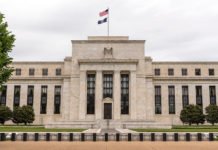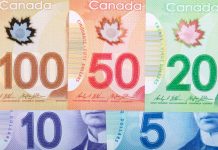- Real GDP grew 6.4% (annualized) in the first quarter, ahead of the median consensus forecast for 6.1%. The rebound over the past three quarters has left economic activity just 0.9% below its pre-pandemic level.
- The acceleration in GDP growth came largely from a jump in consumer spending, which rose 10.7% (annualized) in the first quarter. Once again spending on durable goods rocketed higher once again, up 41.4% annualized. According to the BEA, another jump up in vehicles spending was the bulk of the story, but all major durable goods categories saw big spending gains. Services spending rose a solid 4.6%, a step up from 4.3% in Q4, led by spending on food services and accommodation. Still, spending on services remains 5.7% below pre-pandemic levels.
- Non-residential fixed investment posted a solid 9.9% gain, although the pace of growth has cooled from 13.1% in Q4. Spending on equipment once again led the way, rising 16.7% in Q1, led by information processing equipment. Outlays on intellectual property products rose a healthy 10.1%, led by software. Spending on nonresidential structures continued to fall, down 4.8% in Q1. That marks its 6th consecutive quarter of contraction – as investment had been falling even prior to the pandemic.
- Residential investment continued its strong performance, expanding 10.8% in Q1.
- Government spending jumped 6.3%, the strongest increase since Q4 2001. Federal nondefense spending shot up 44.8% annualized, driven by payments made to banks for administering the PPP program. Outlays at the state and local level rose 1.7%, the first increase since the pandemic hit.
- The export recovery took a breather in Q1, as exports fell 1.1%. Imports continued to gain ground, up 5.7%. Therefore, net exports subtracted 0.9 percentage points from growth.
- A lot of consumption came out of inventories in Q1, with the drawdown subtracting 2.6 percentage points from topline GDP growth.
- Finally, personal disposable income rose 67% annualized due to payments made from the late-2020 Coronavirus Response and Relief Supplemental Appropriations Act and the American Rescue Plan. As a result, the saving rate rose to 21% in the quarter, 13% in Q4.
Key Implications
- Thanks to two rounds of stimulus payments and vaccinations ramping up, consumer unleashed some serious spending in the first quarter of 2021. As a result, the U.S. is on track to exceed its pre-pandemic level of activity in the second quarter, and will start making up for lost ground over the coming quarters.
- With the latest round of $1400 payments coming in March, momentum for consumer spending is solid heading into Q2, and an improvement in exports and inventory are likely to boost growth even higher than Q1. We had expected a solid first half of the year in our March forecast, but with growth tracking even better than we expected, we have moved up our expectation for the first Fed hike, as outlined in our recent Dollars & Sense.













